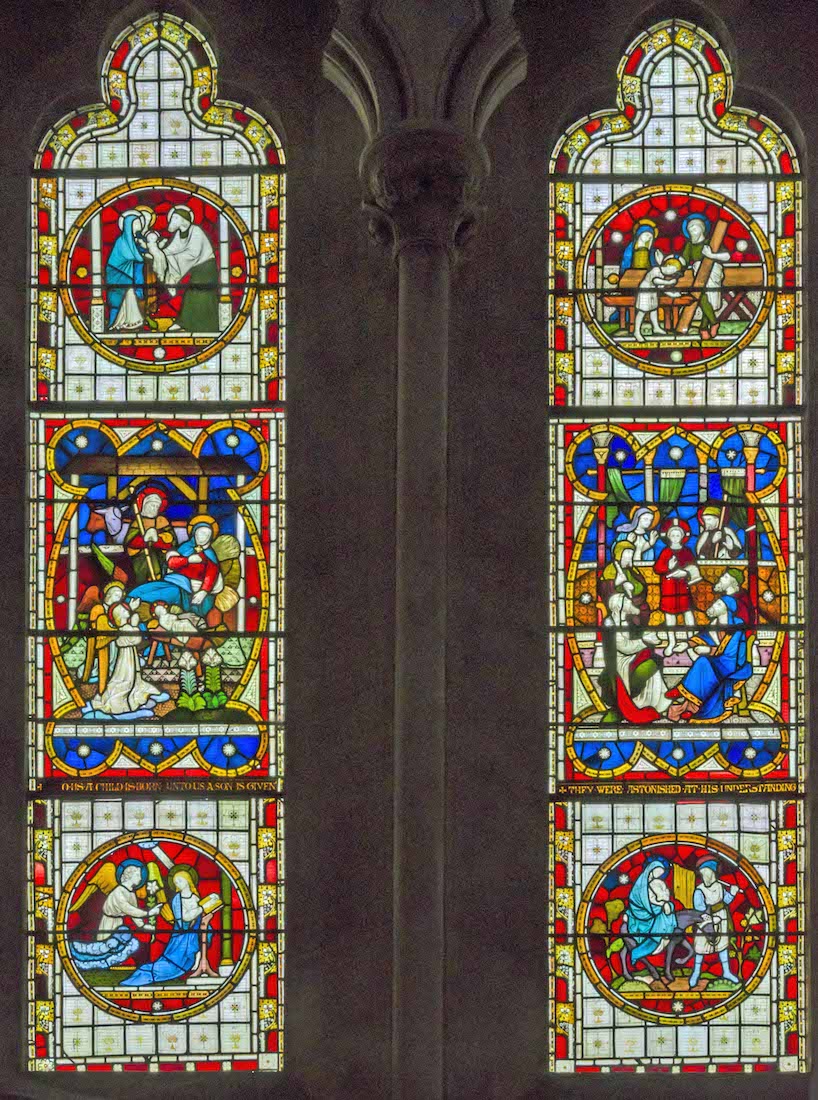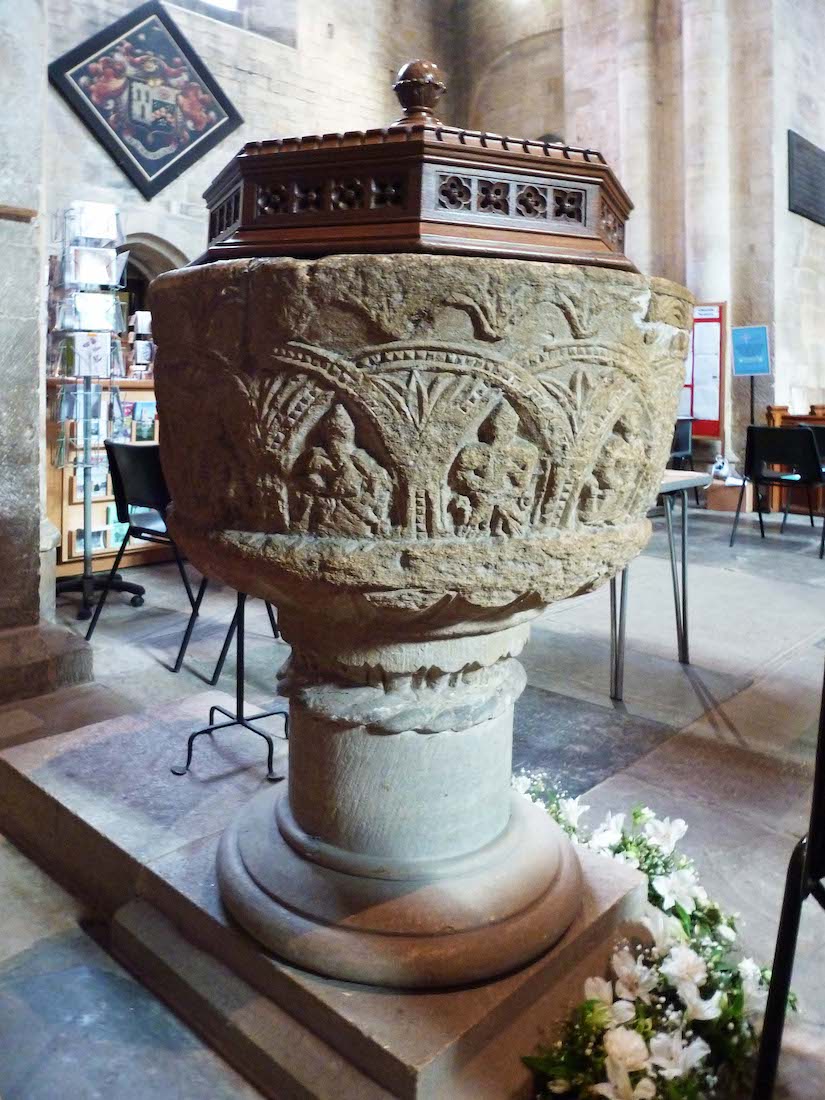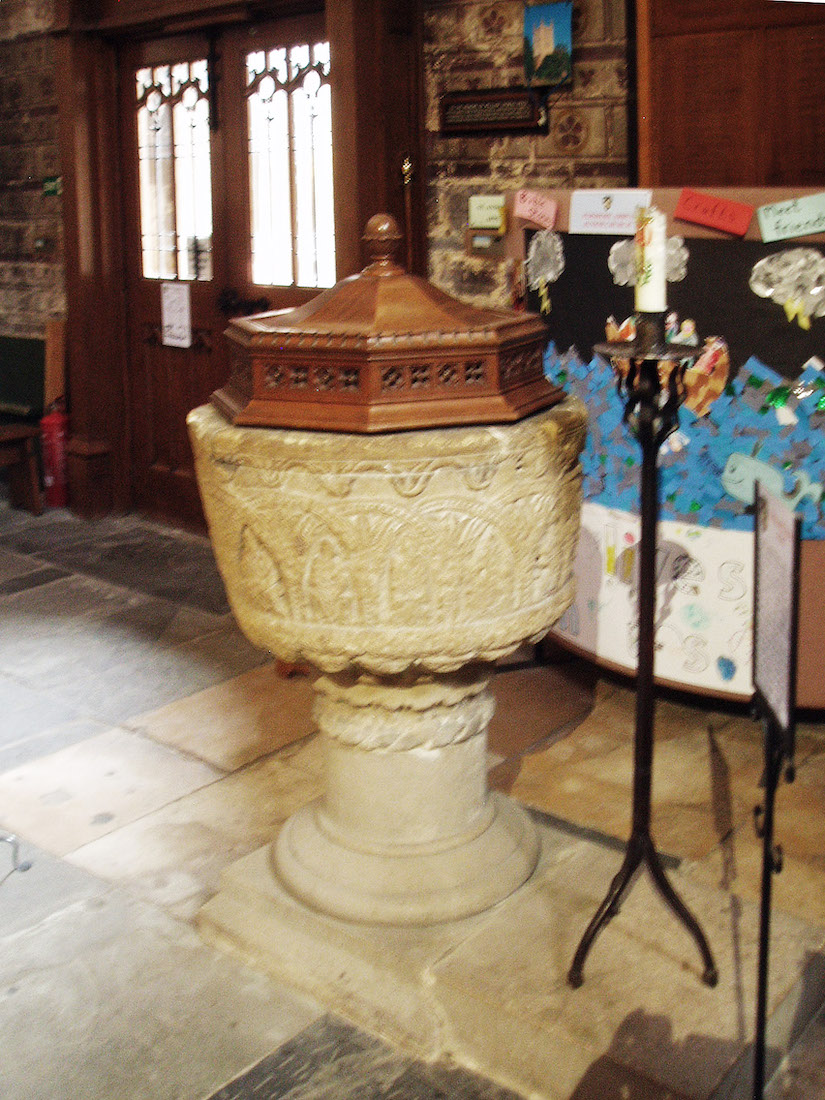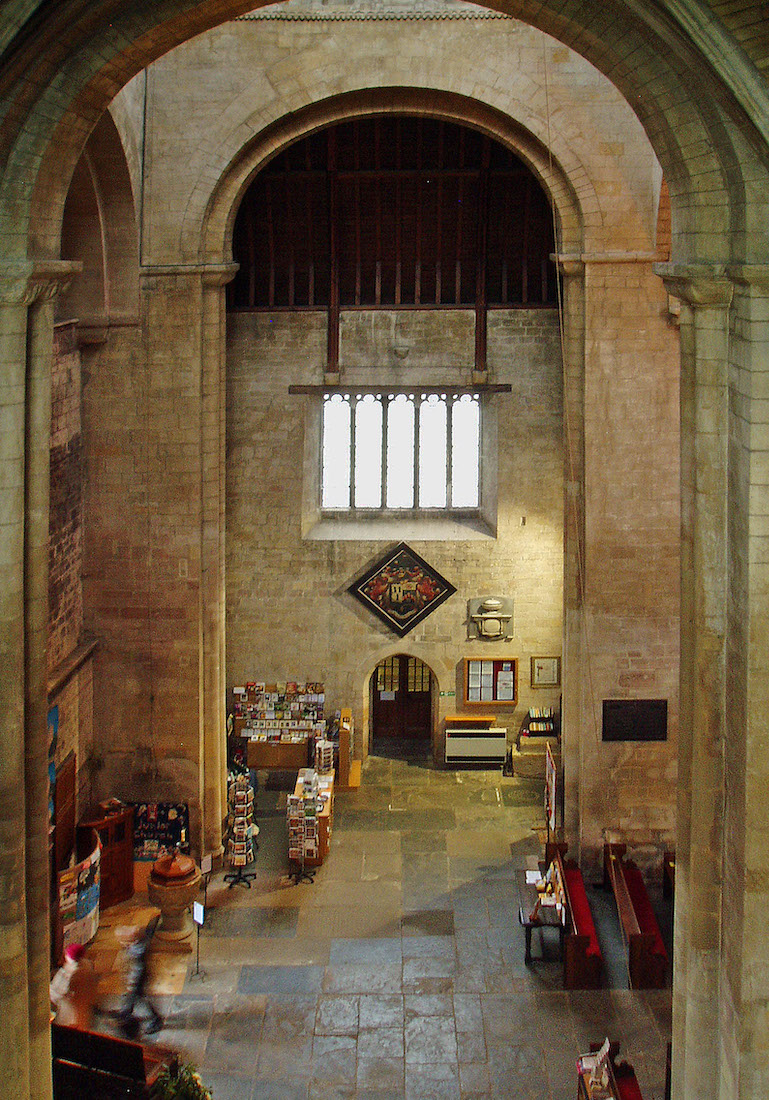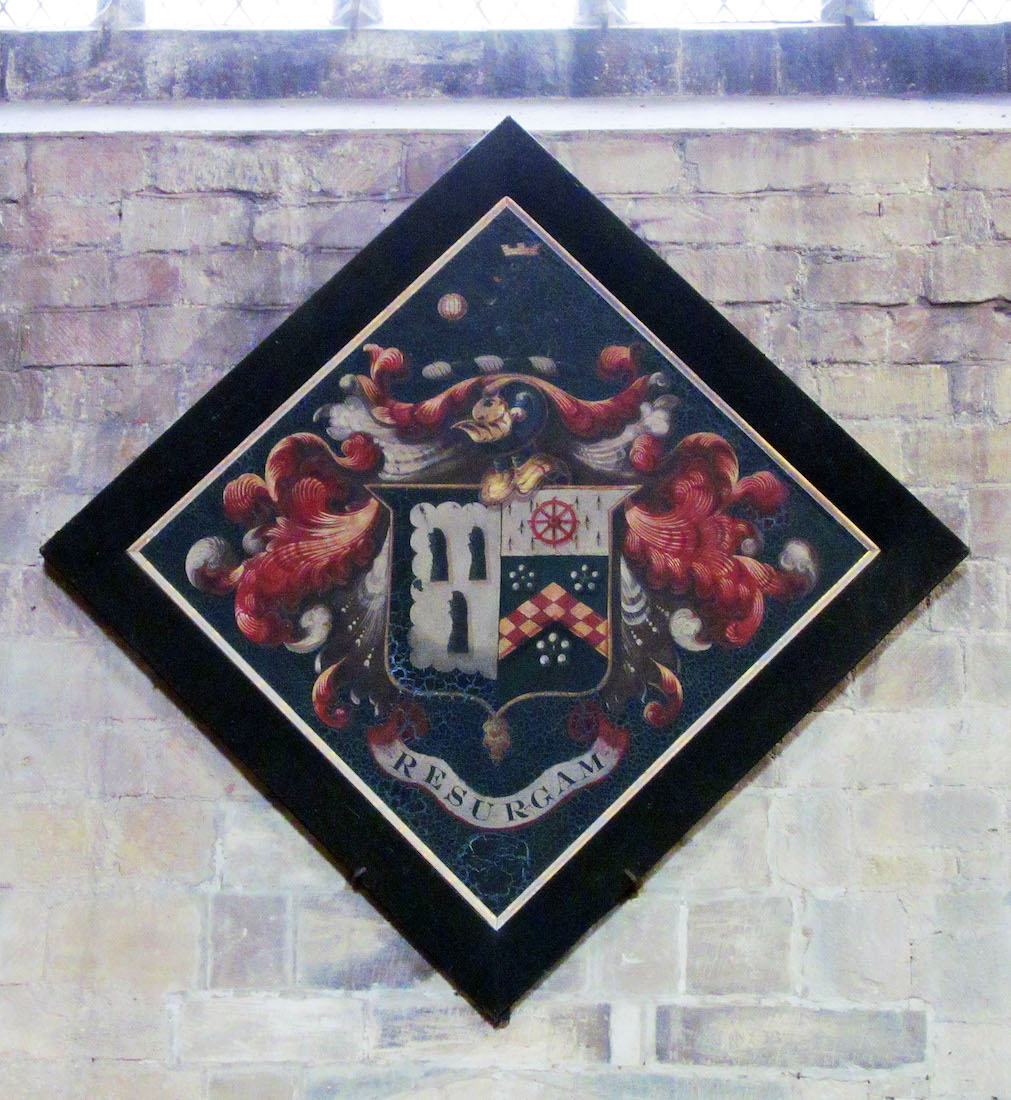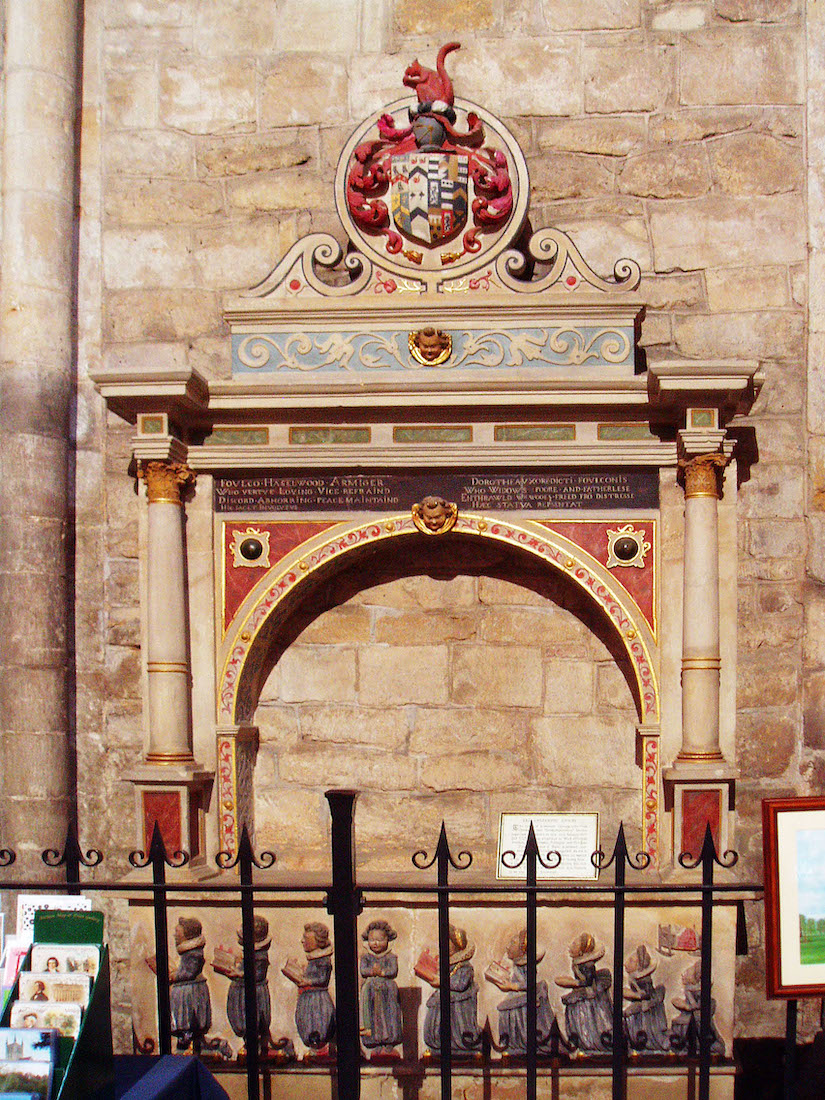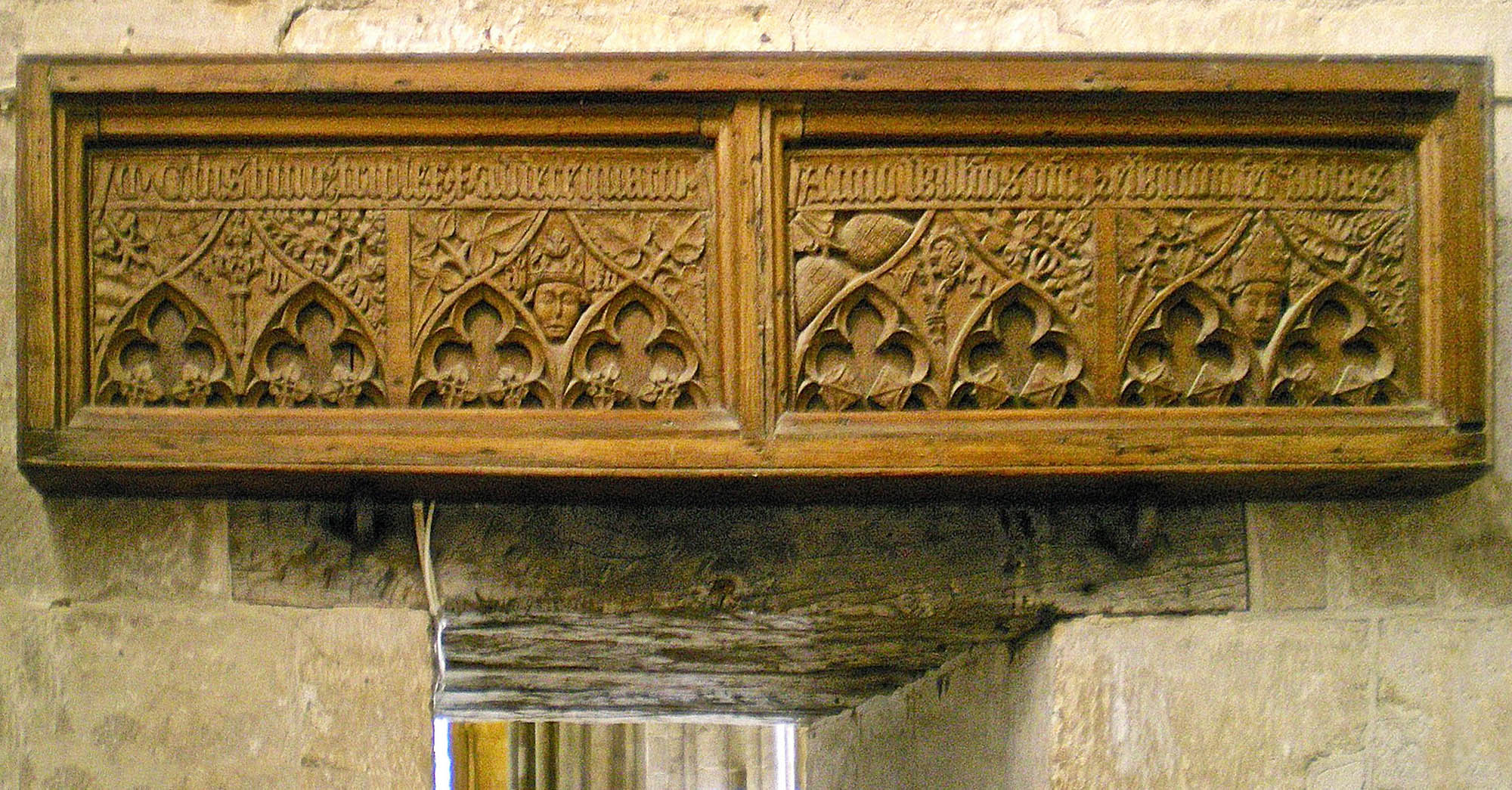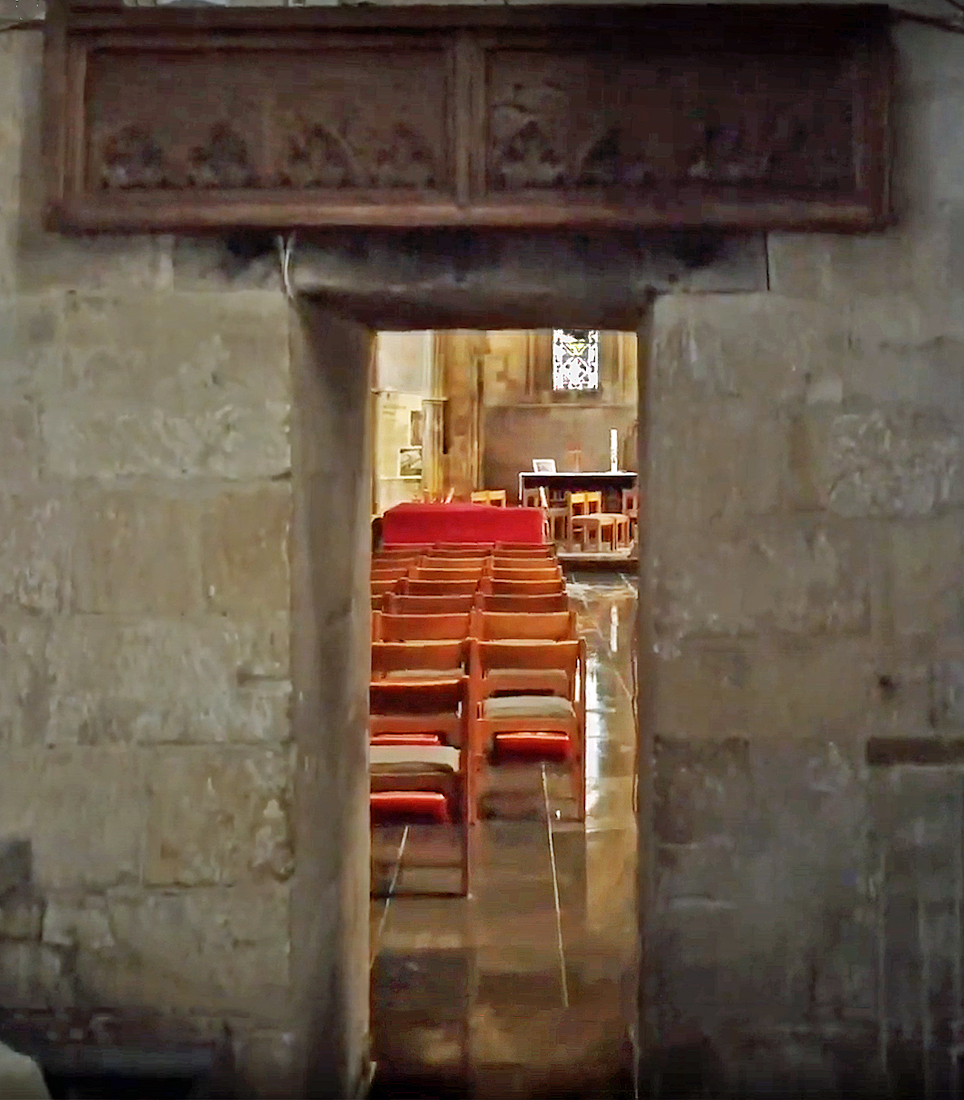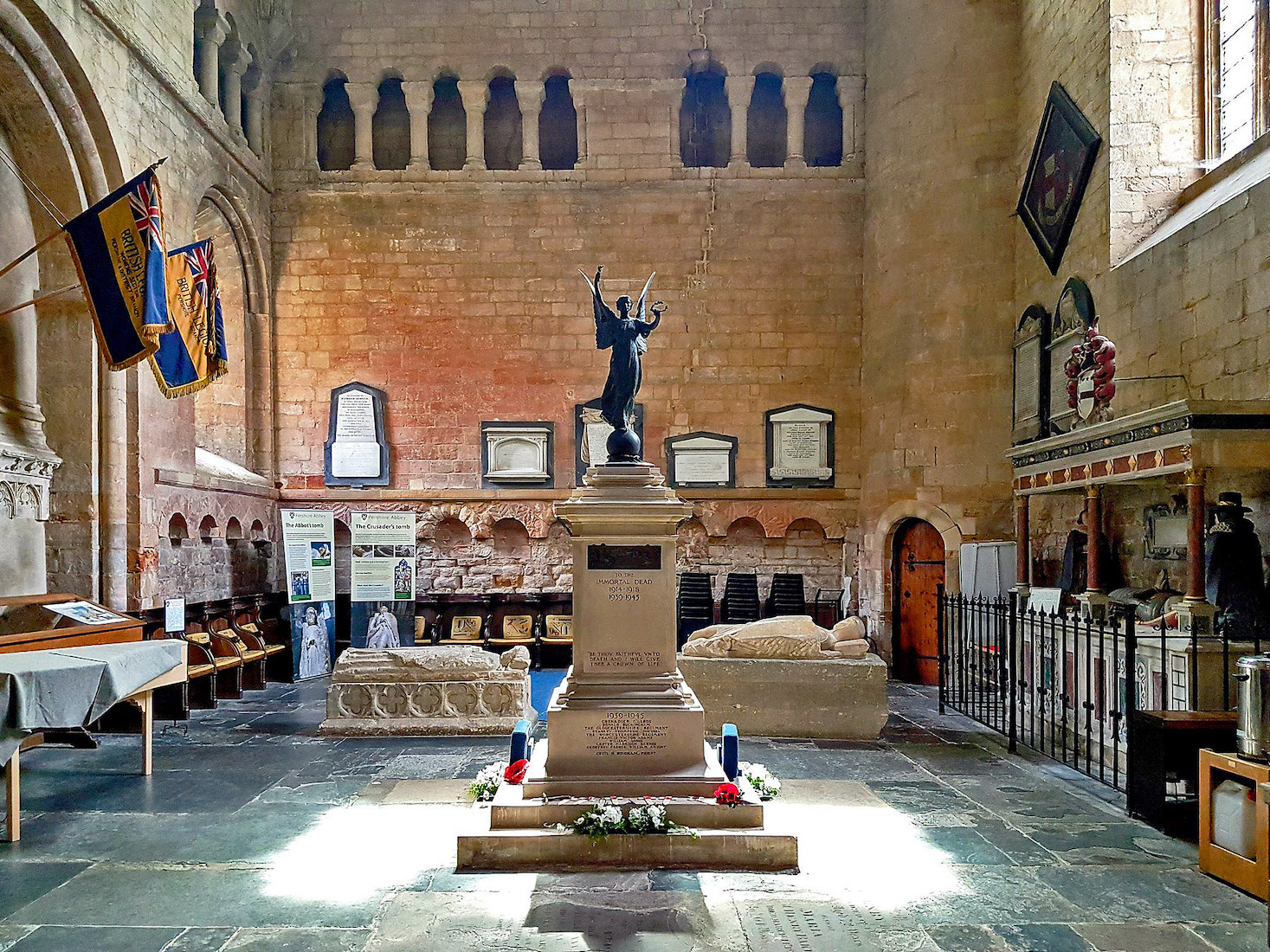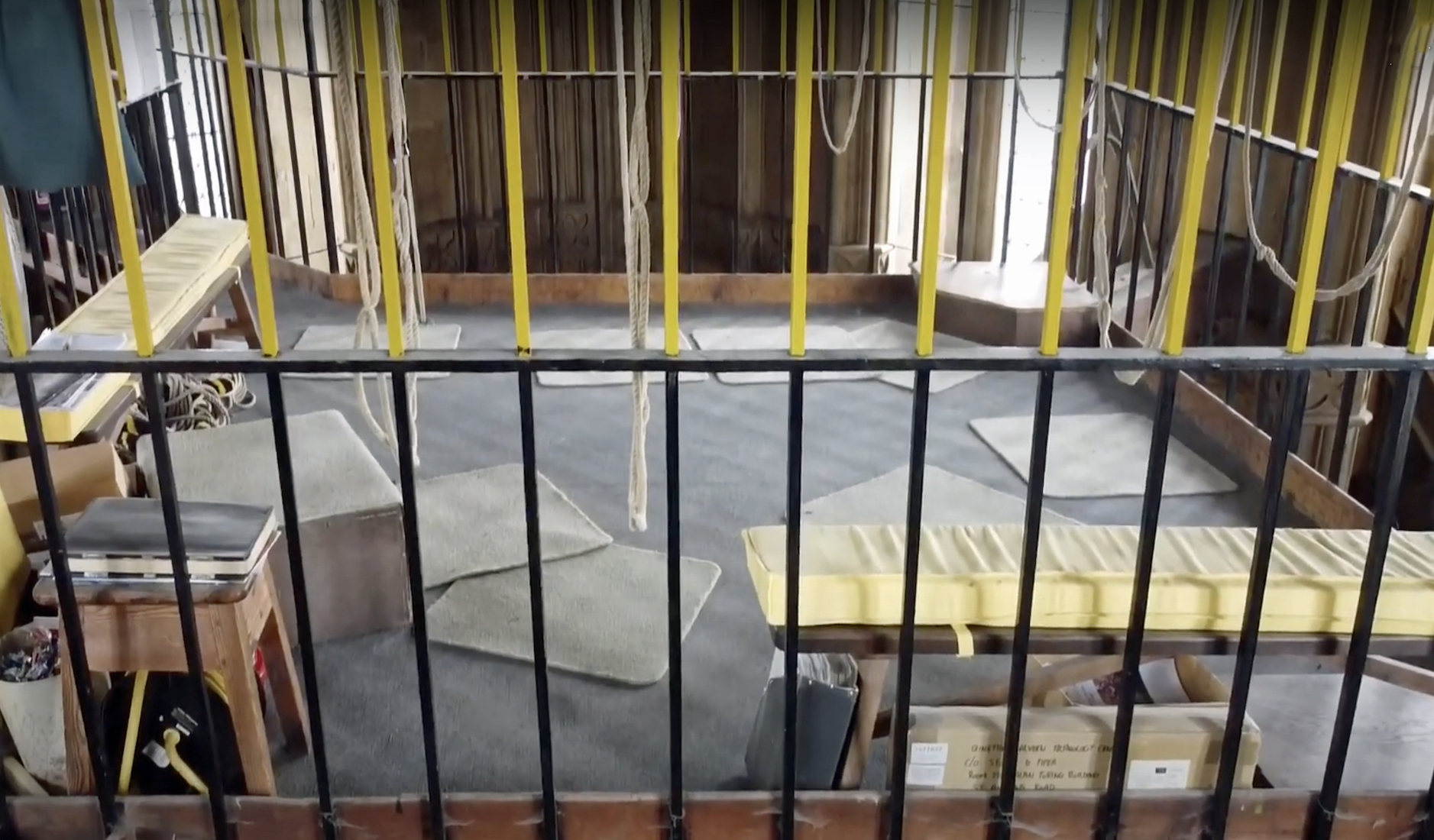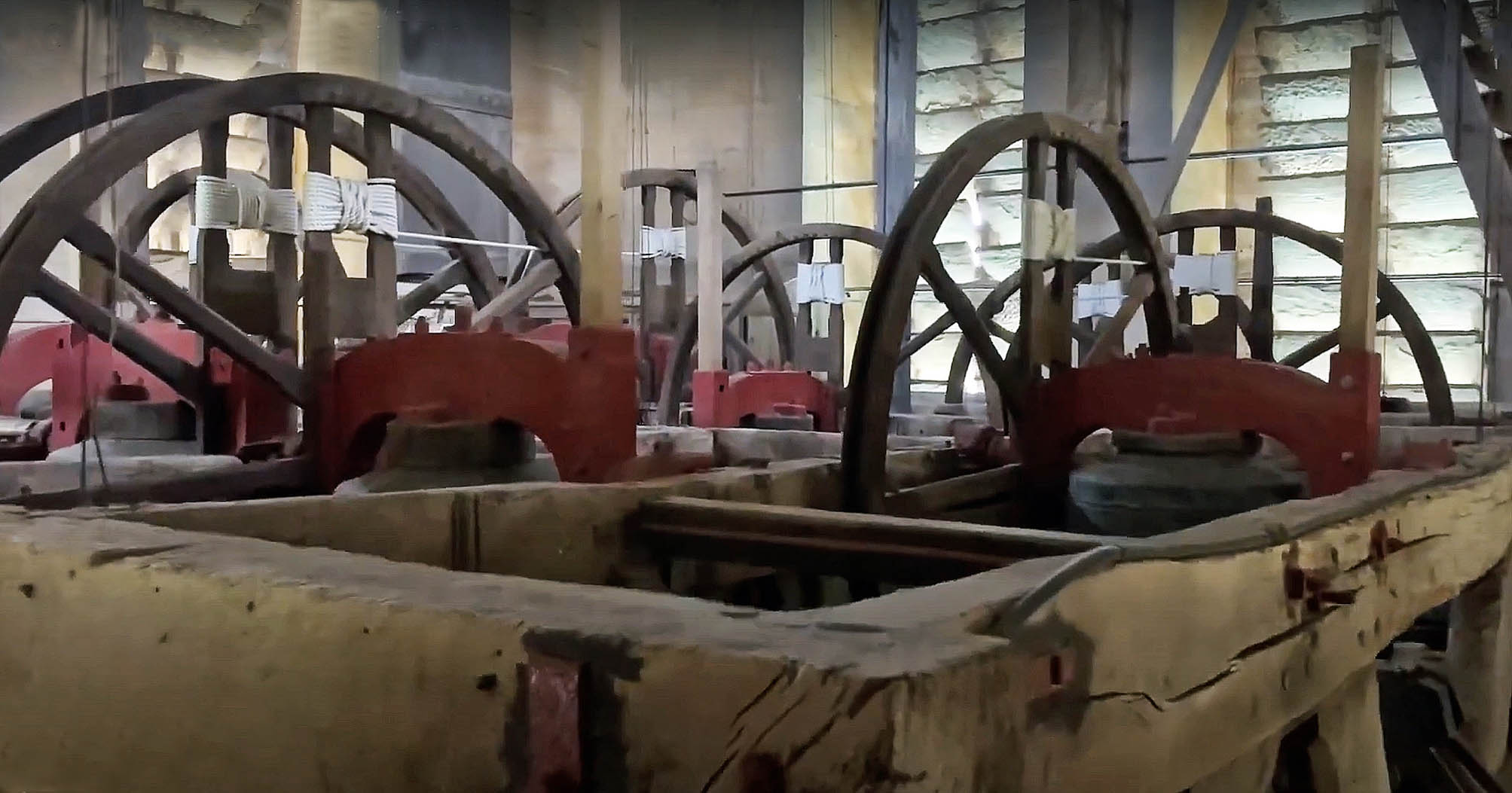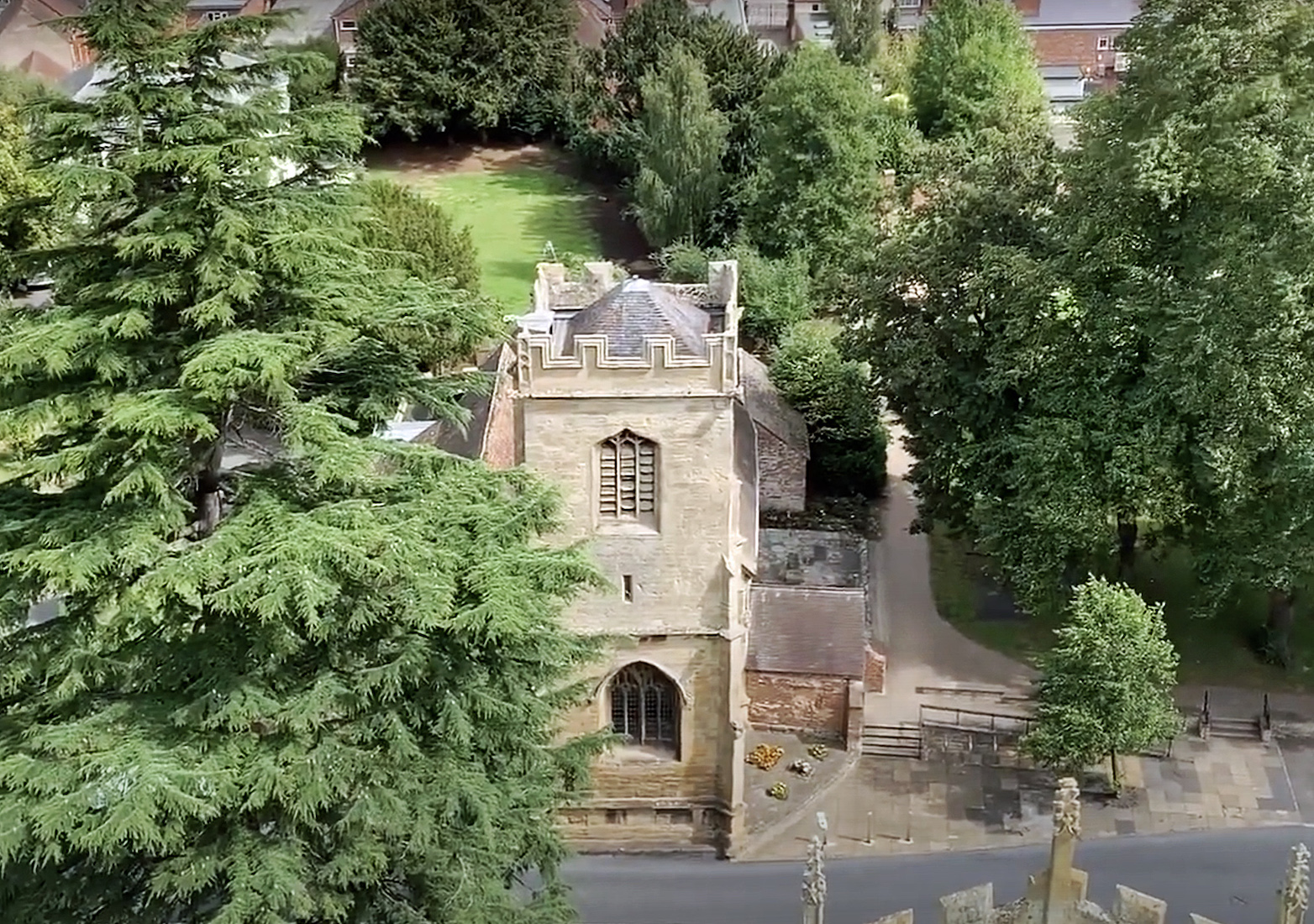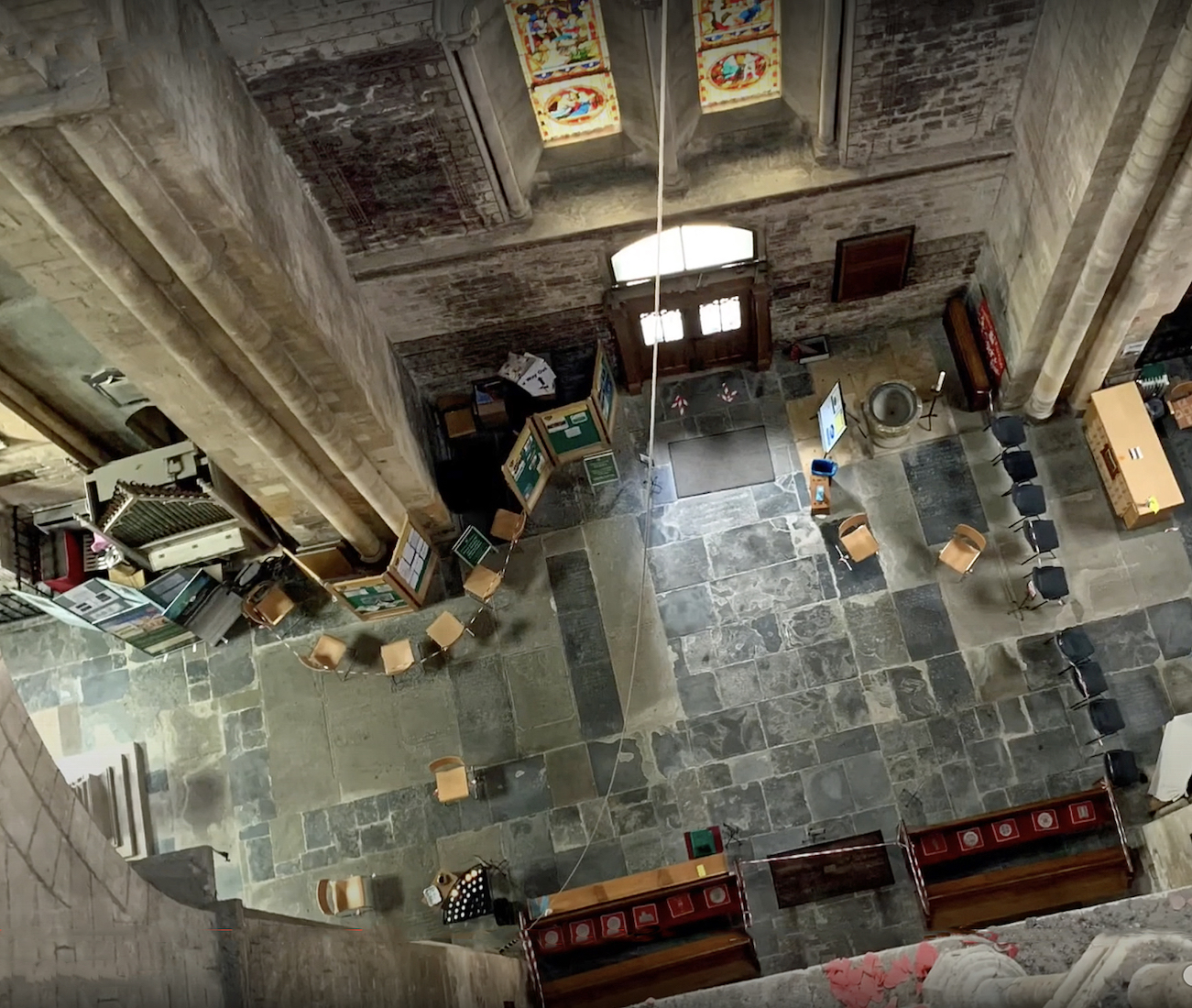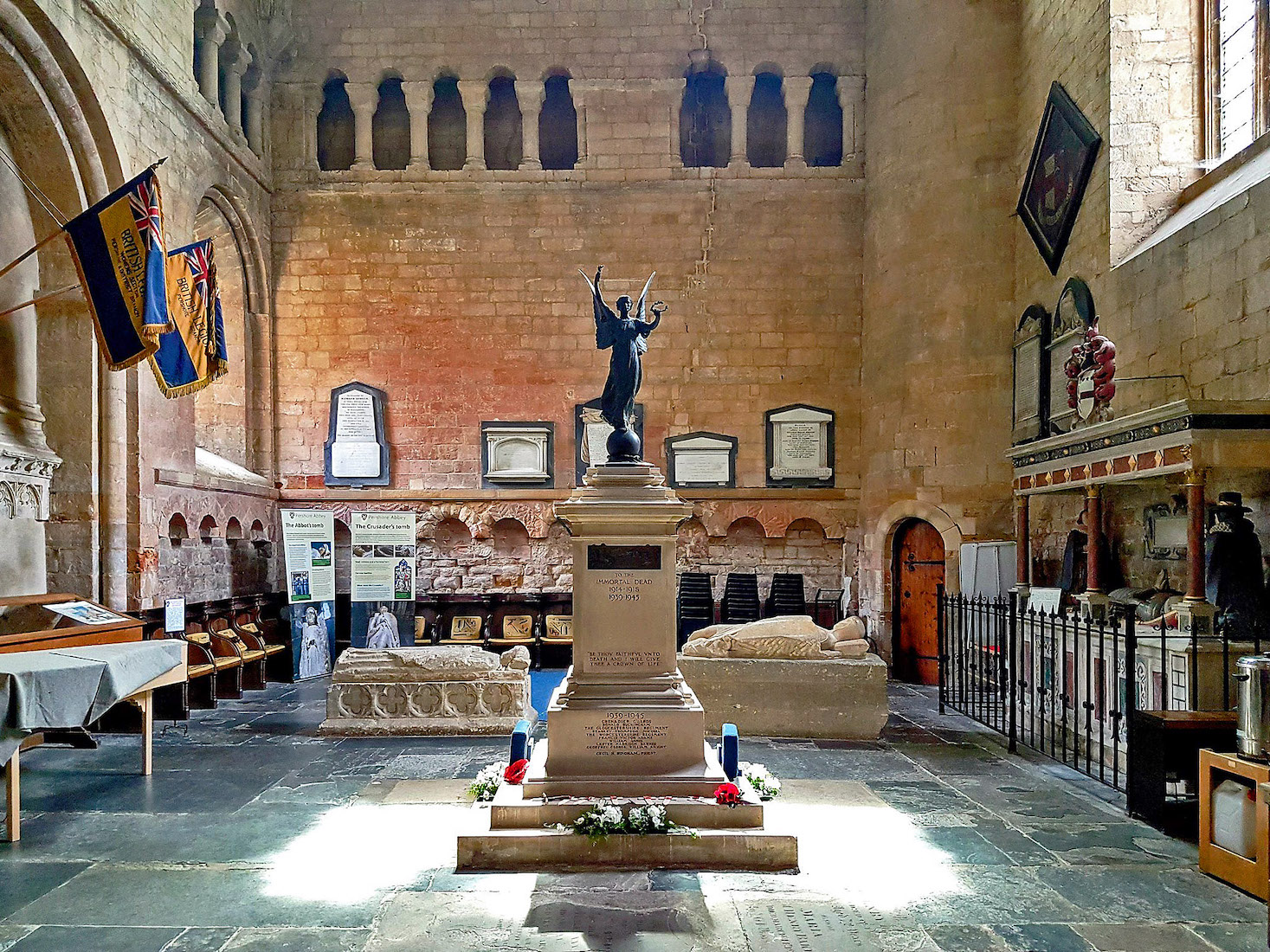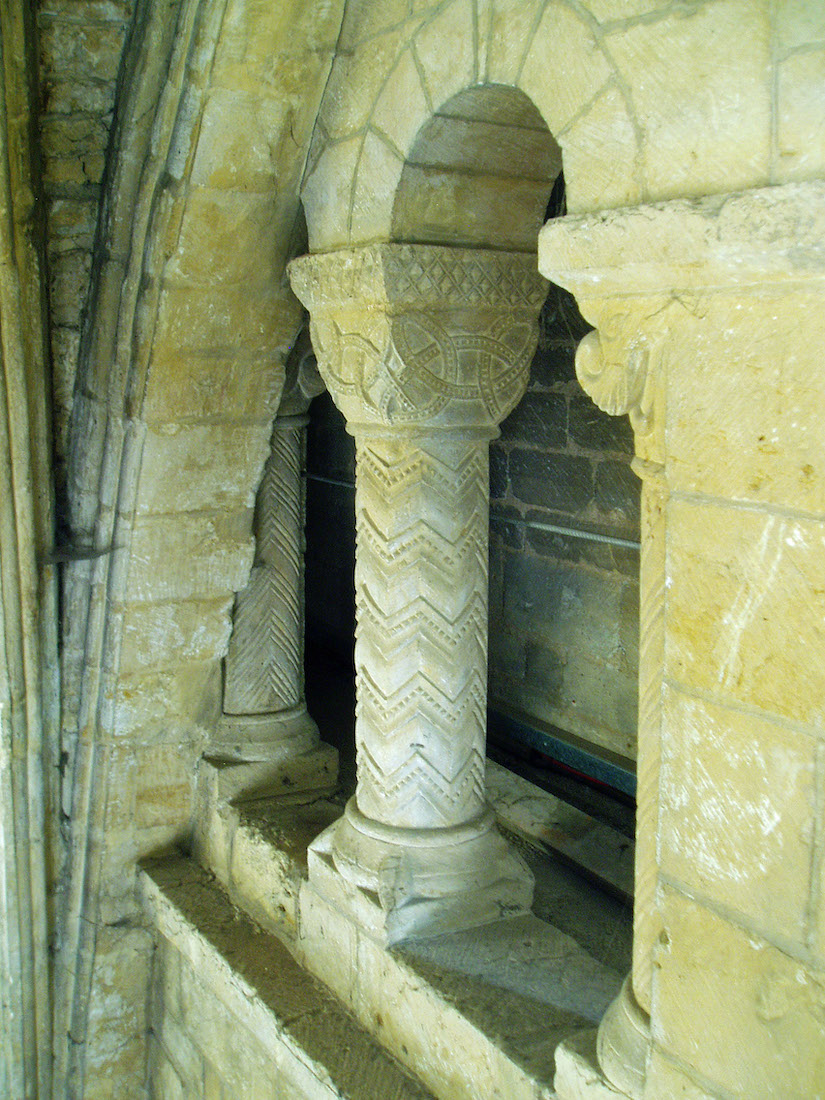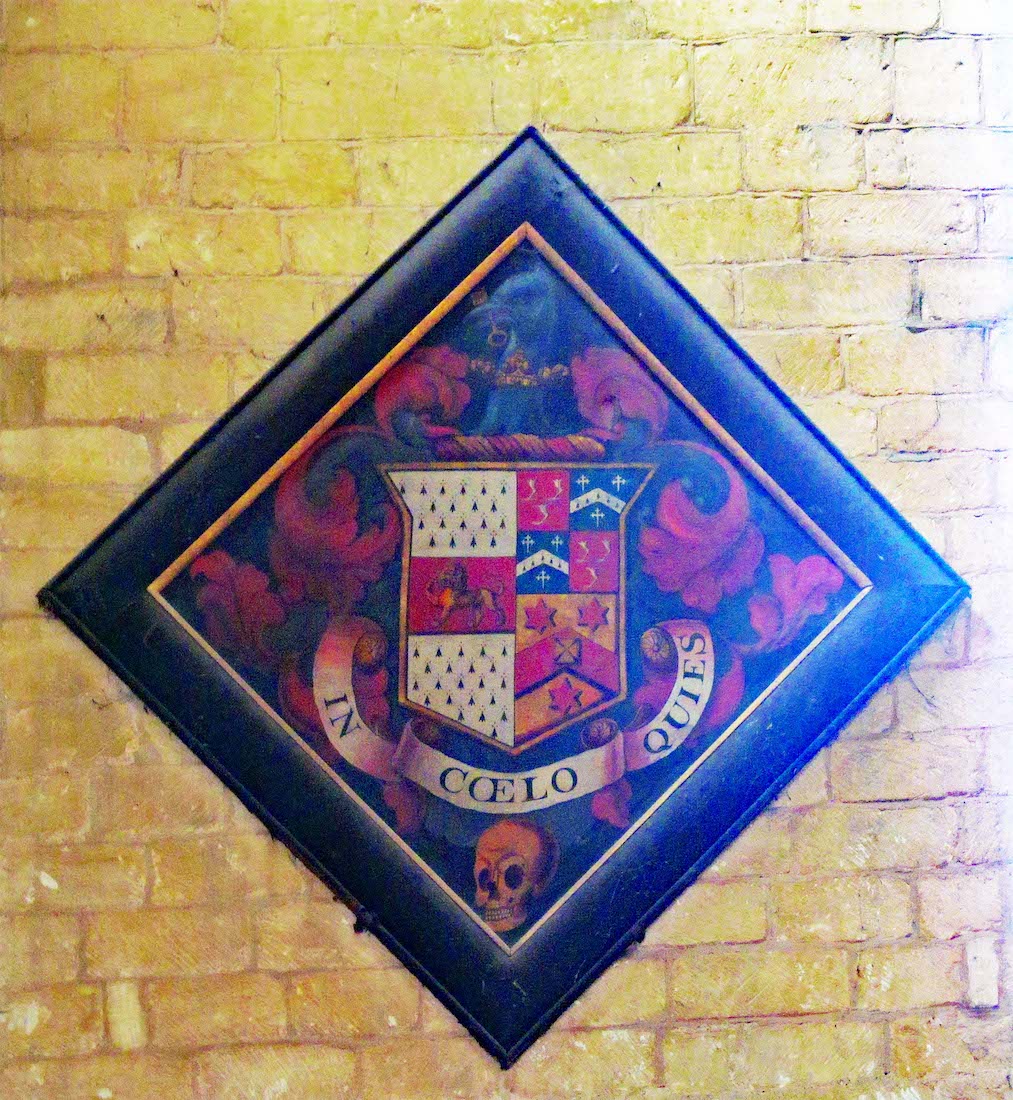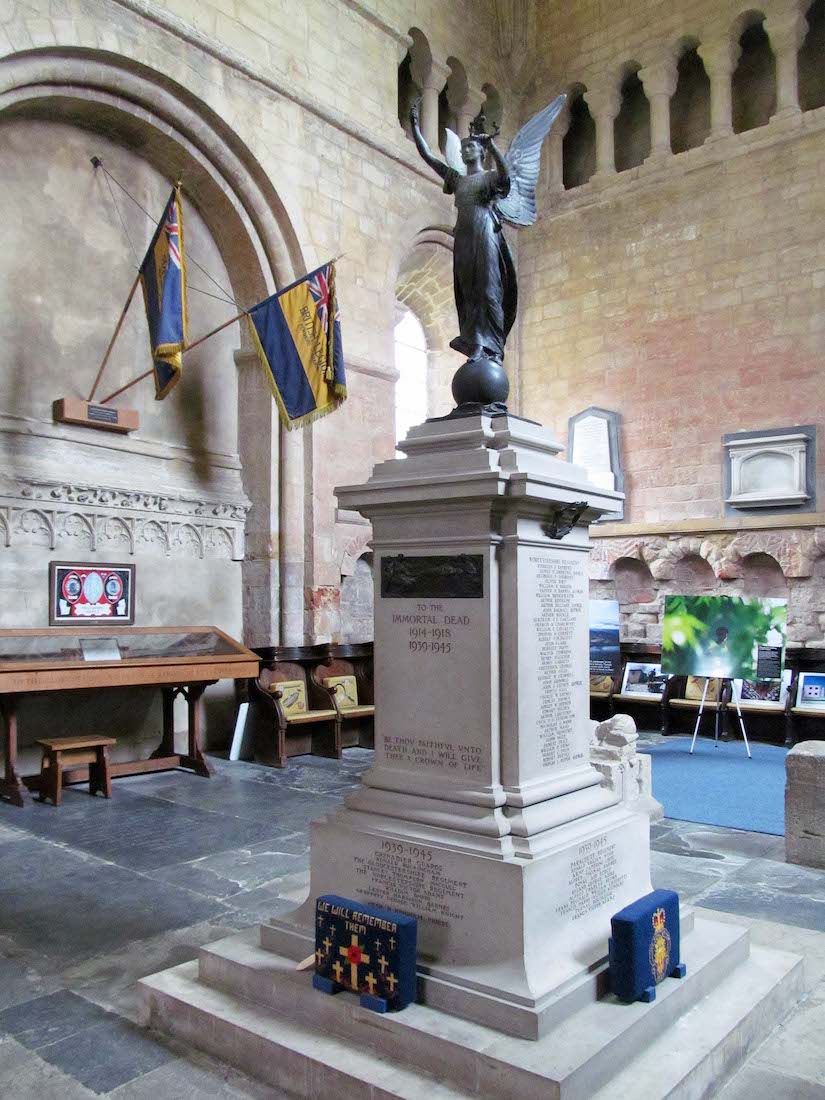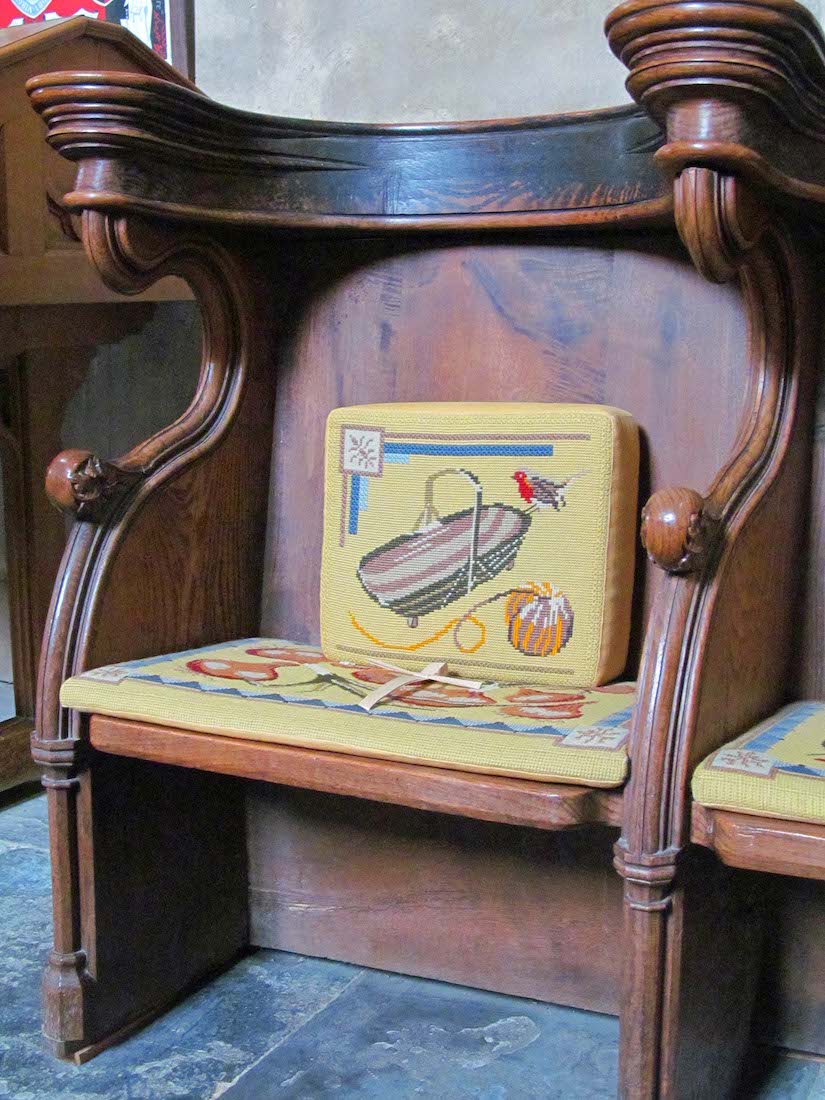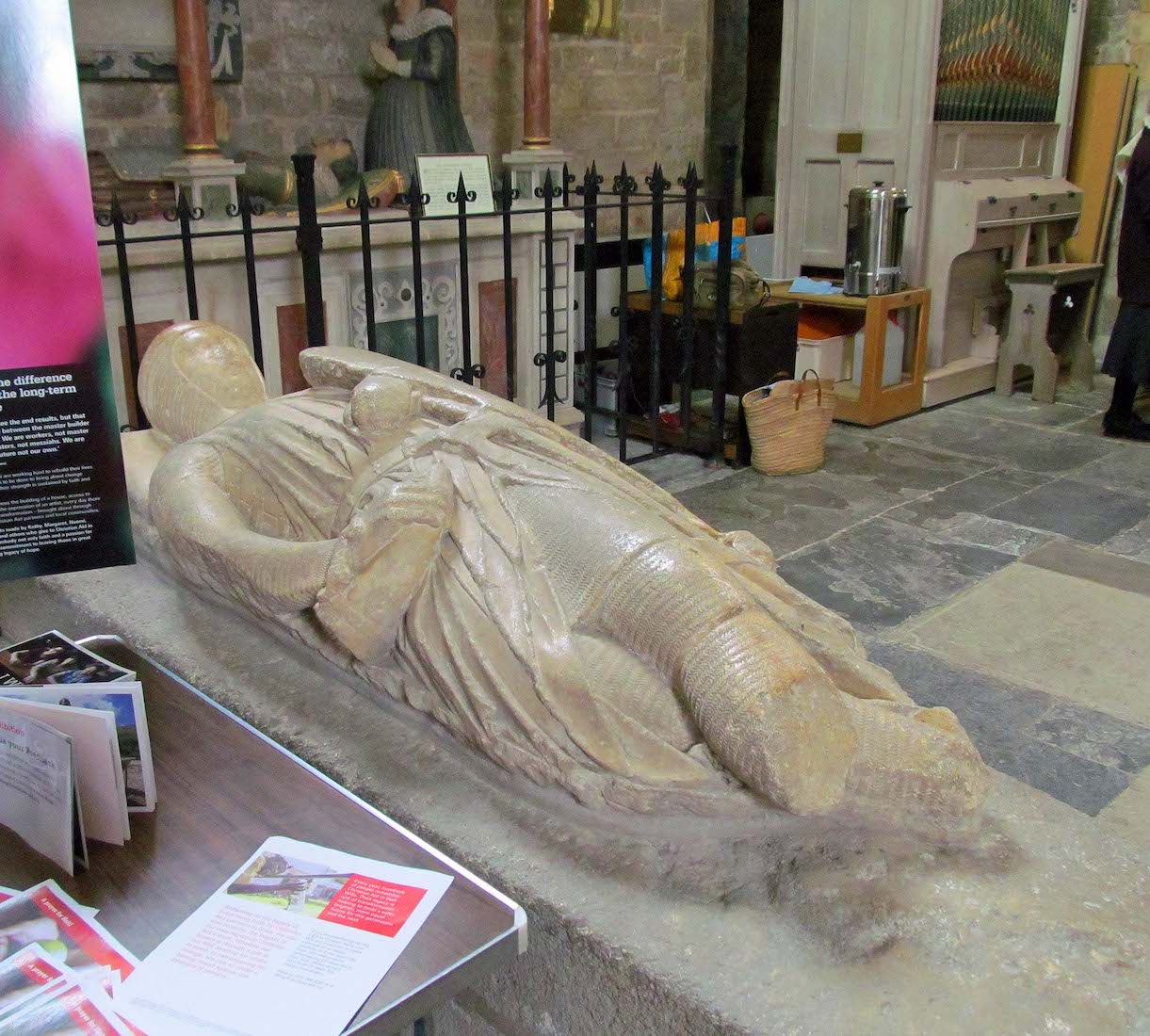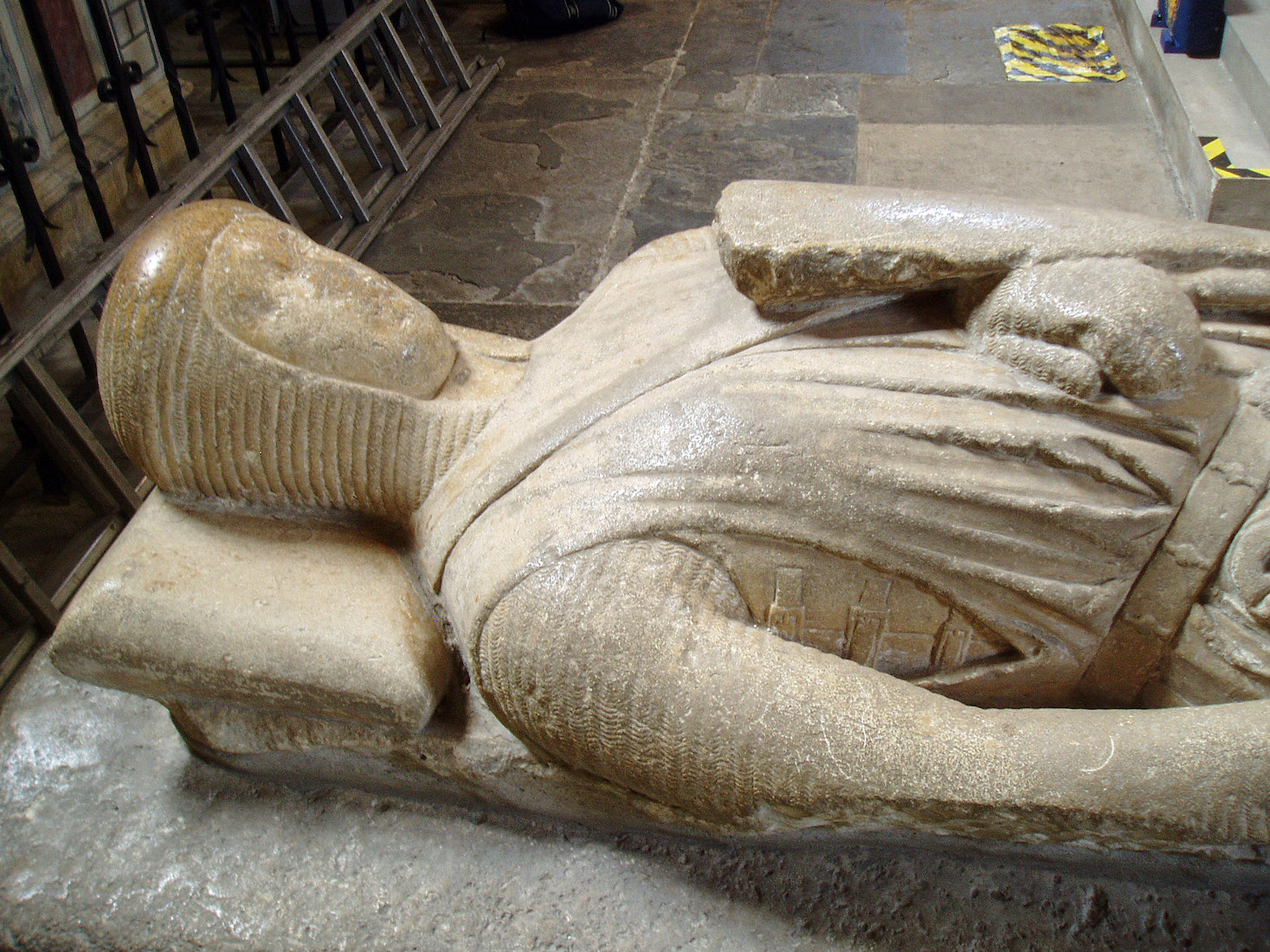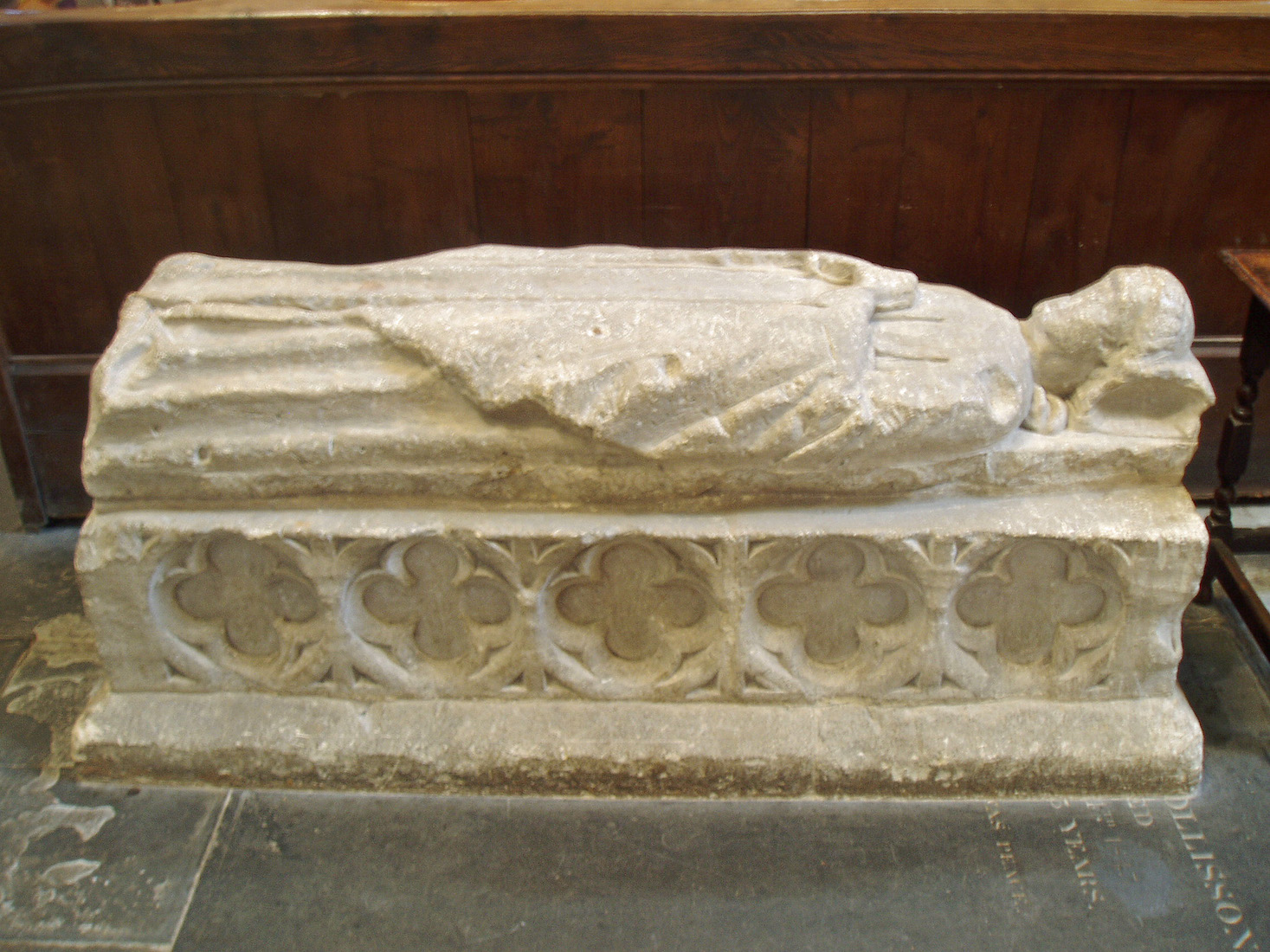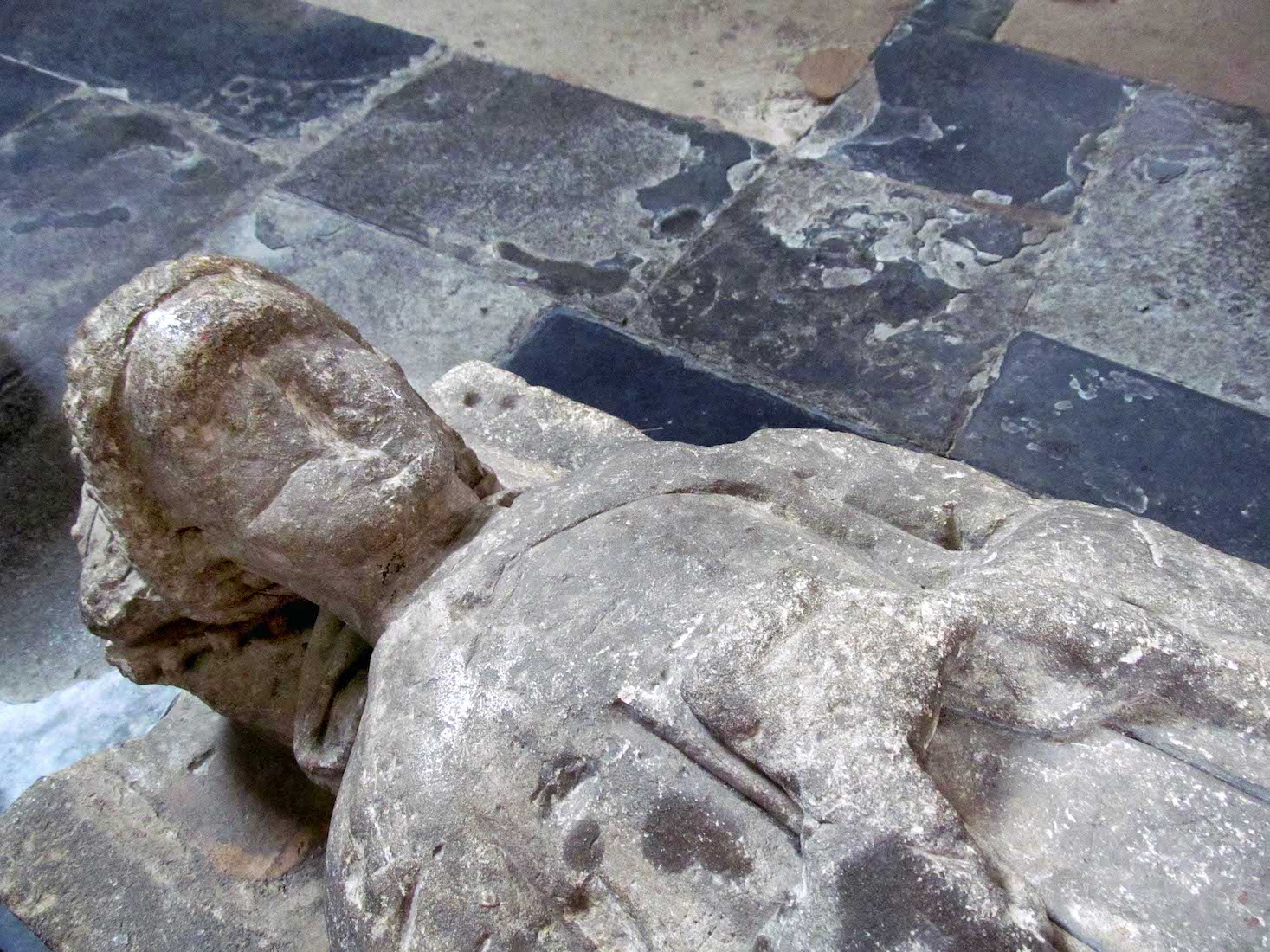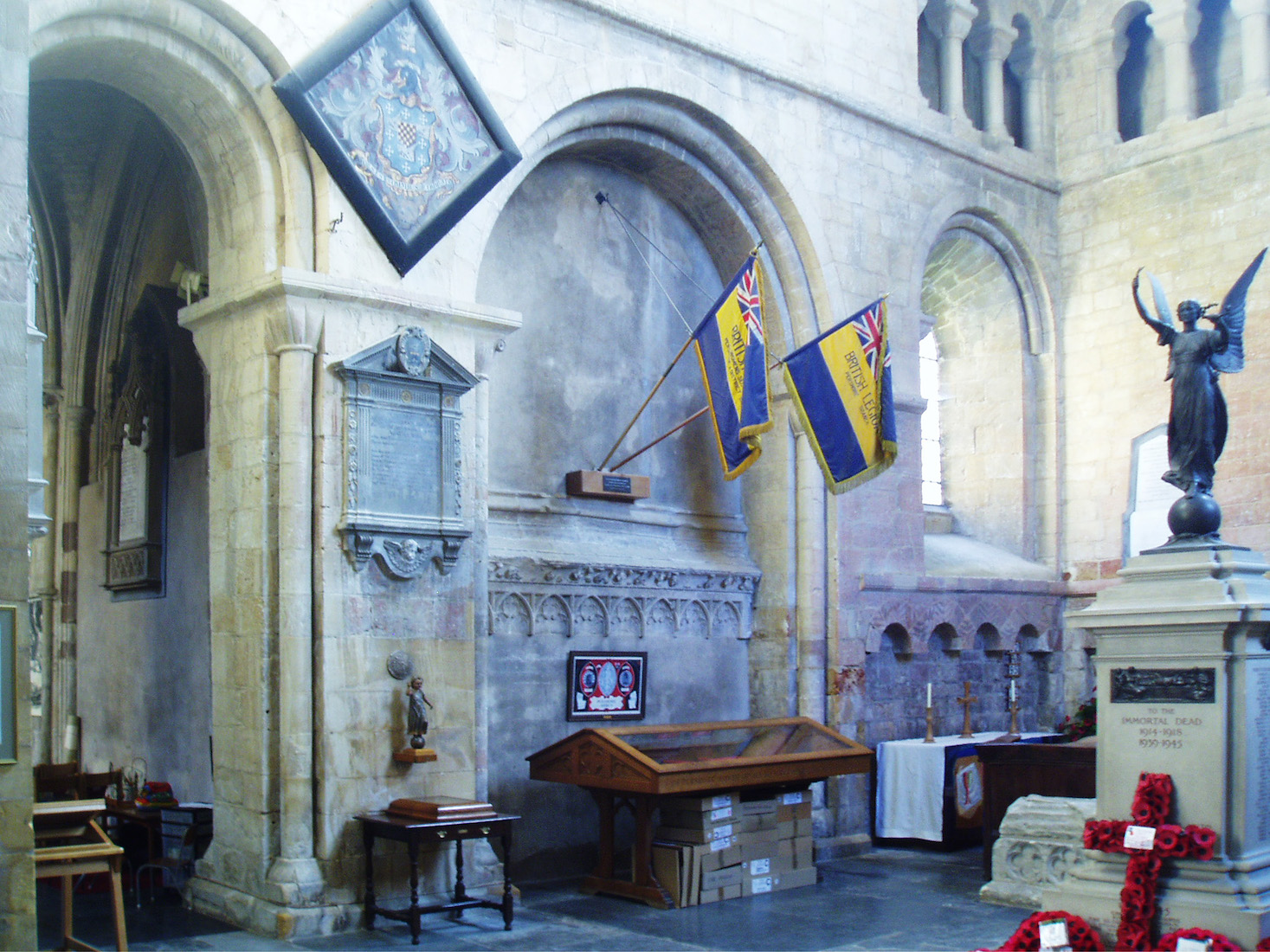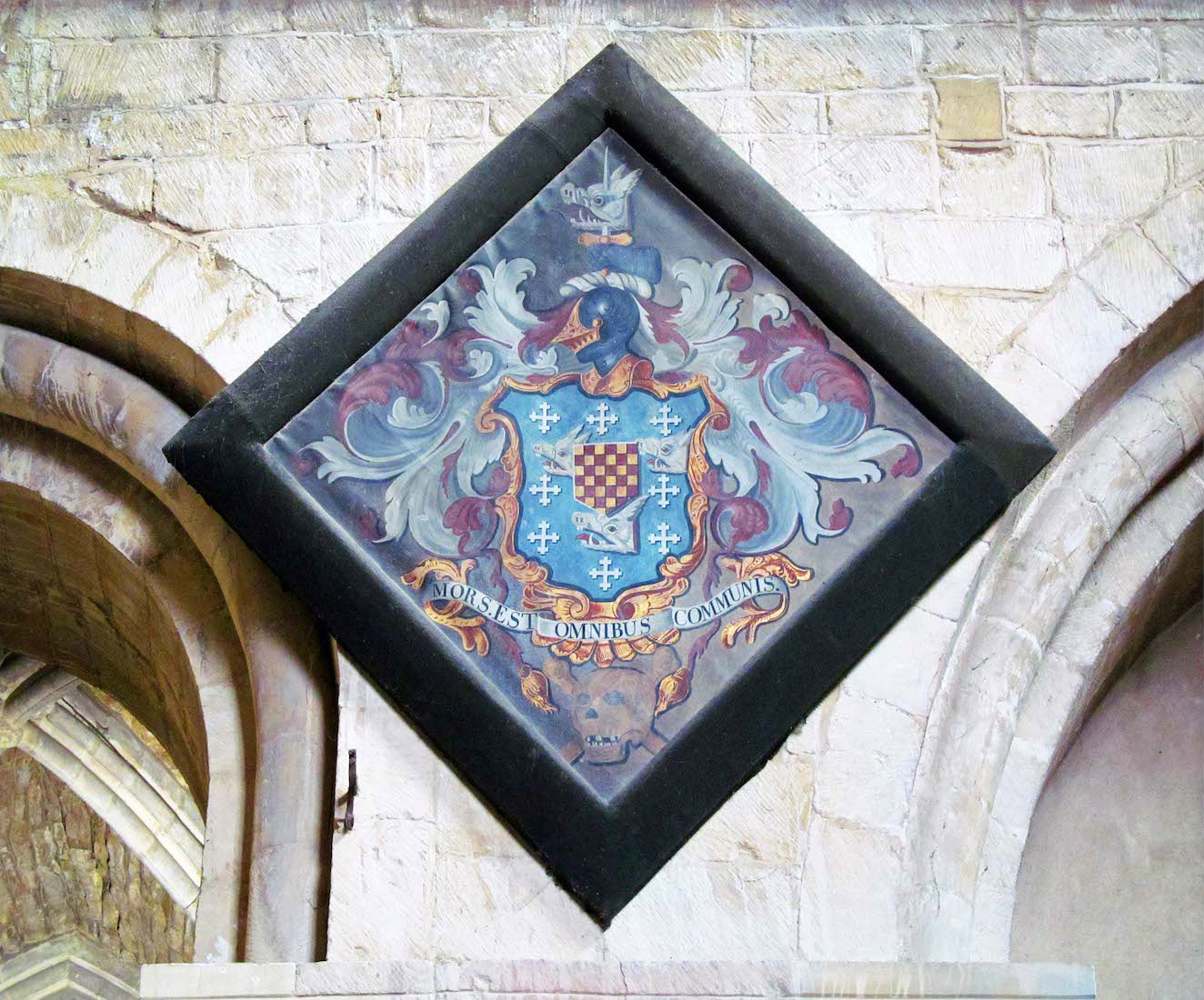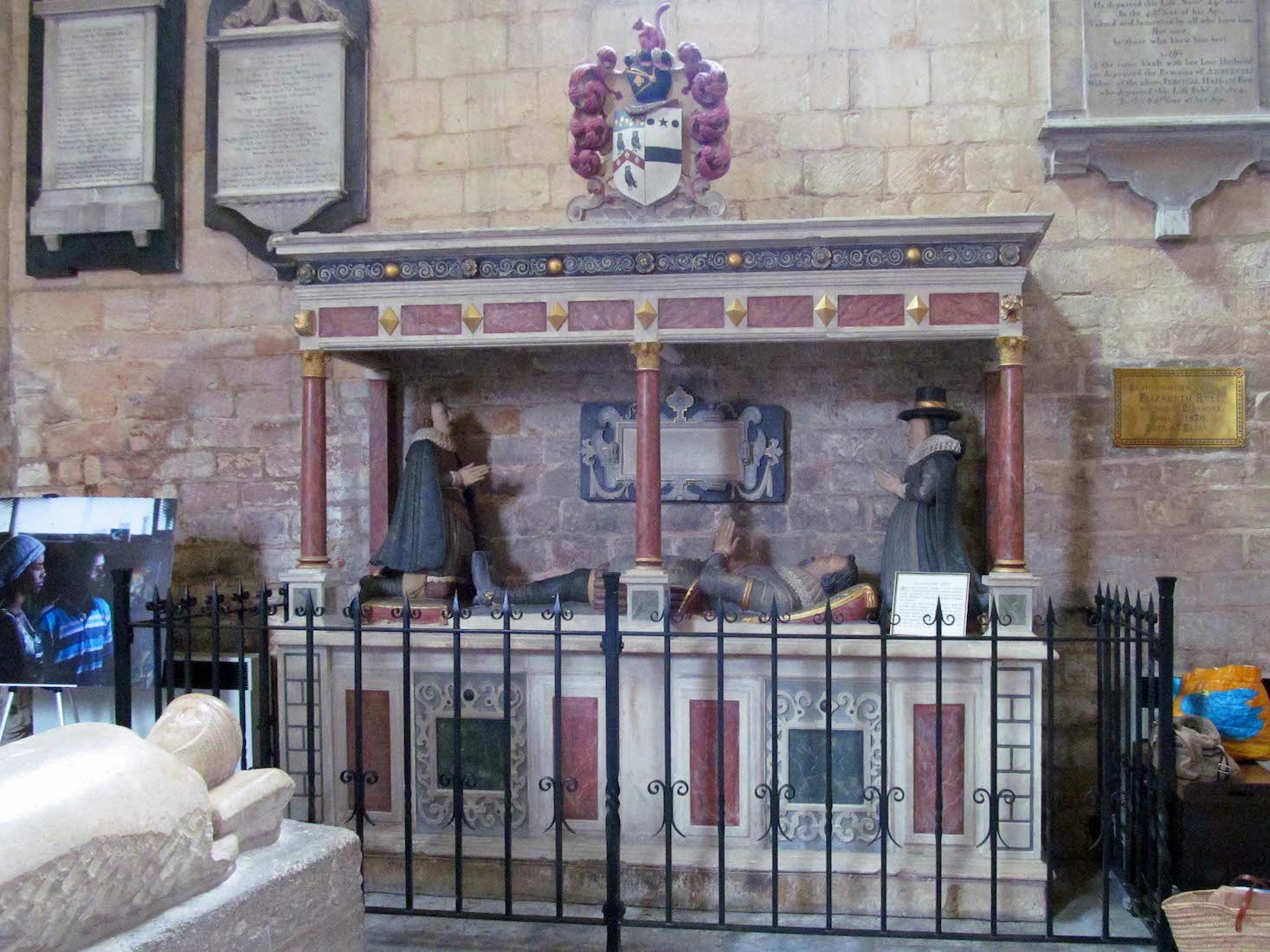21. TOWER AND BELL-RINGERS’ PLATFORM GA AMT
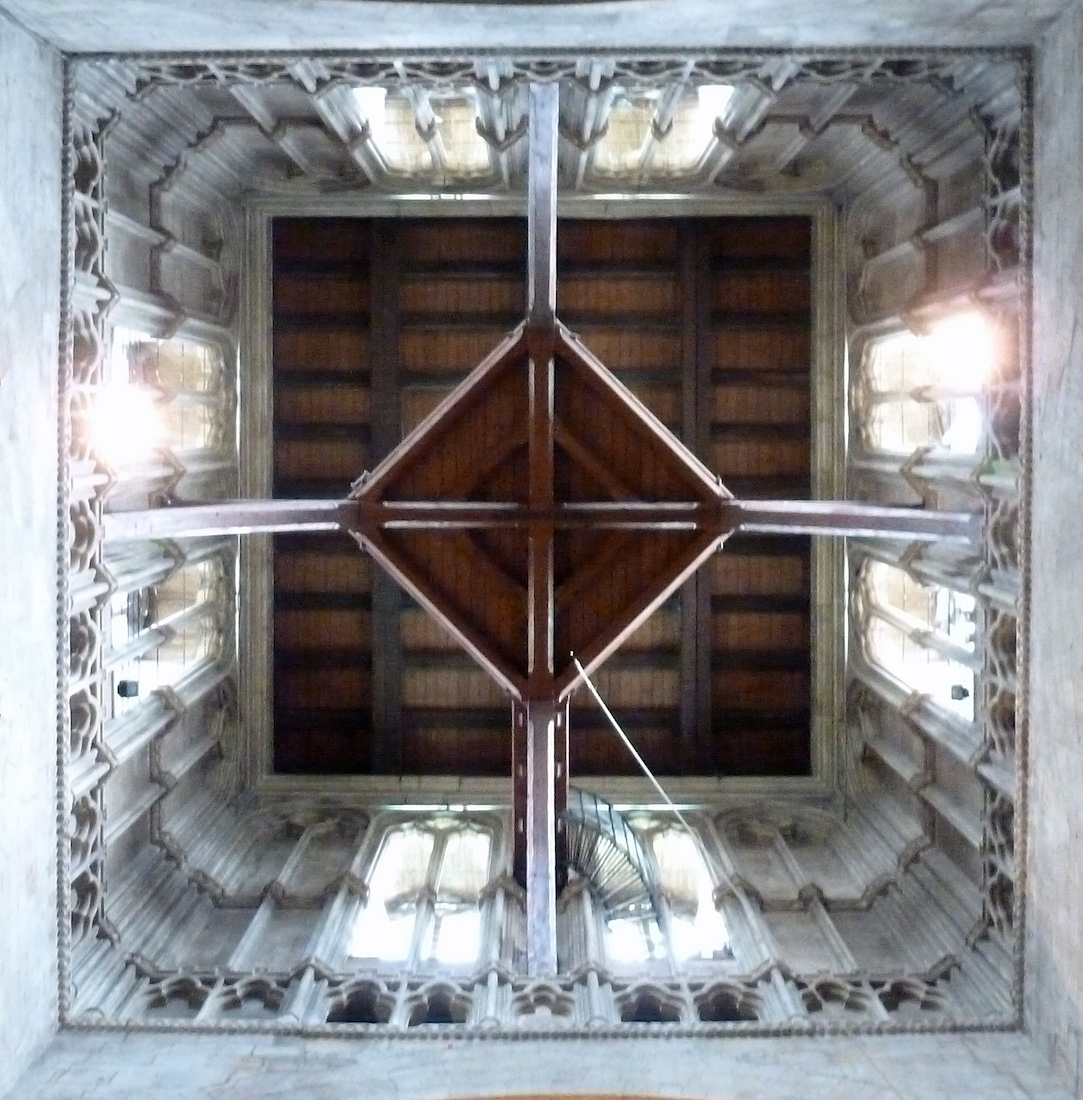
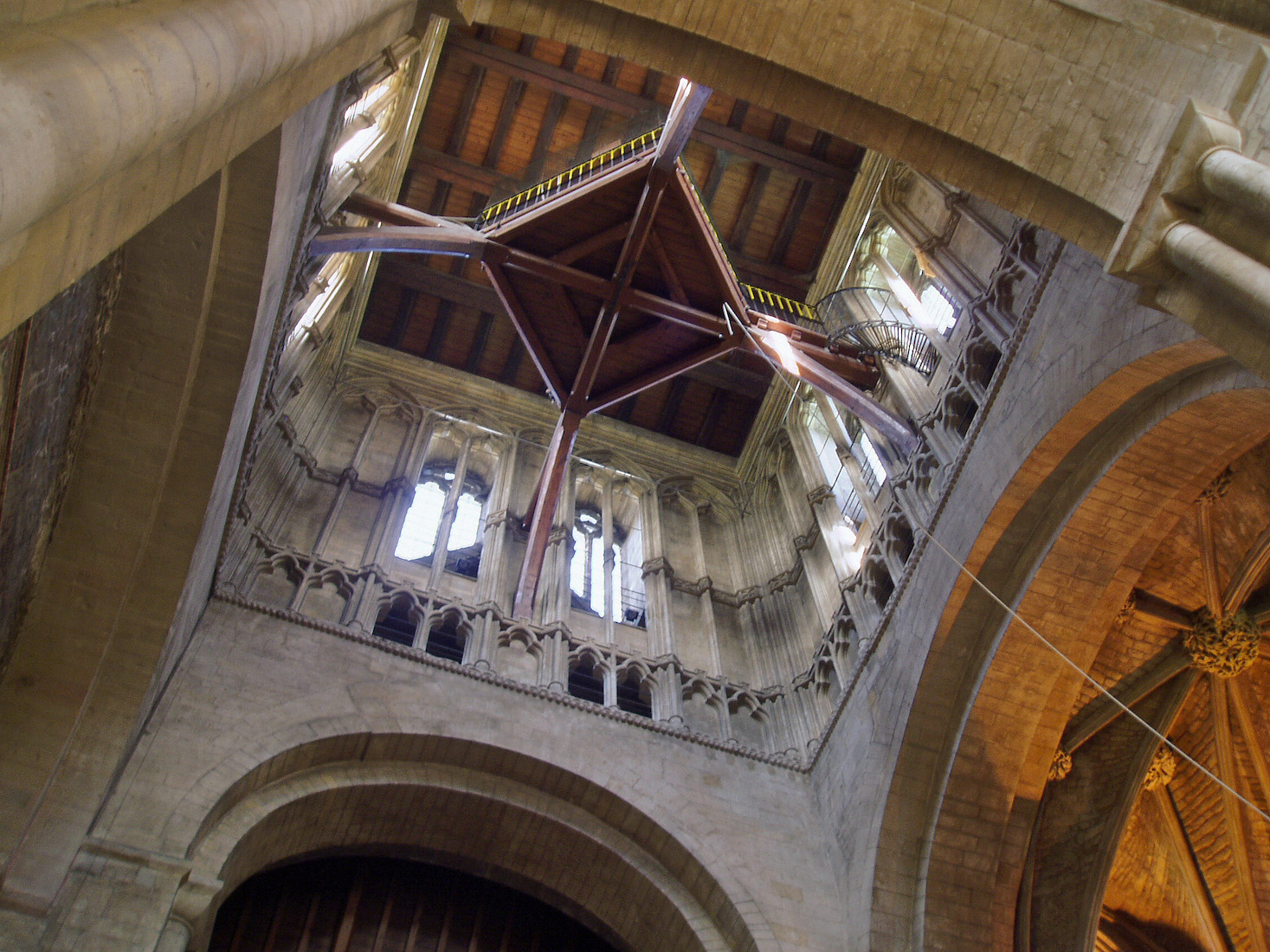
Standing in the crossing and looking up, we see the wooden floor of the bell chamber, high above. More interesting is the brown diagonal square below. This is the ‘floating’ bell-ringers’ platform: the place where the bell-ringer’ stand to ring the bells. Looking carefully we can see the yellow railing which surrounds it, and a spiral set of metal steps which give access.
22. WALL PAINTINGS GA WH WH
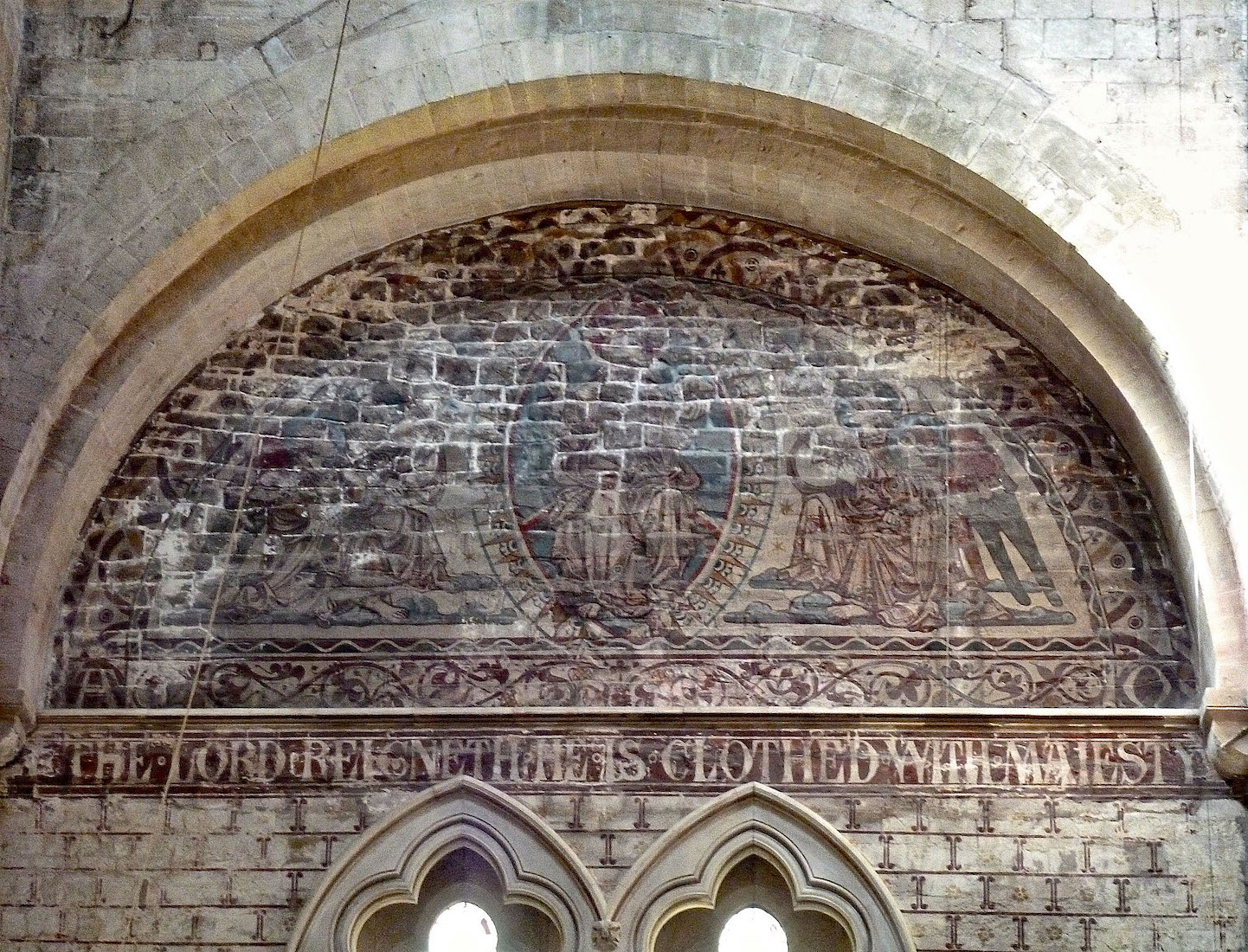
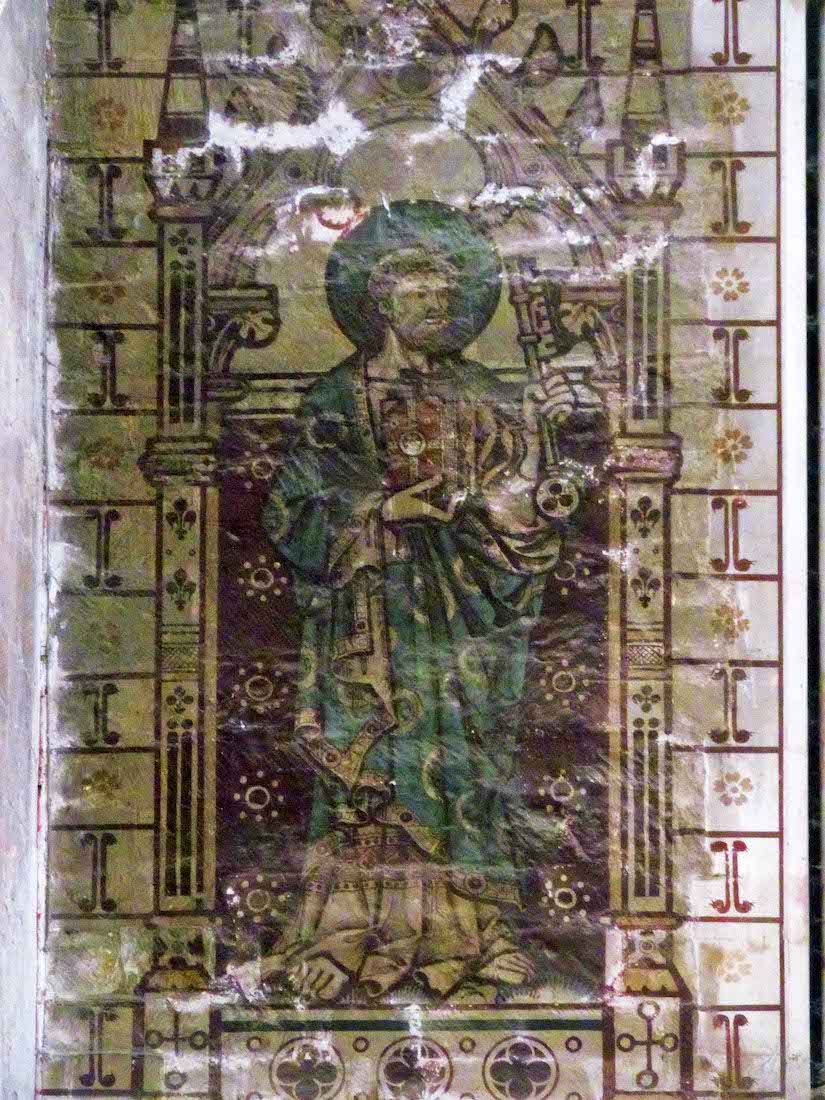
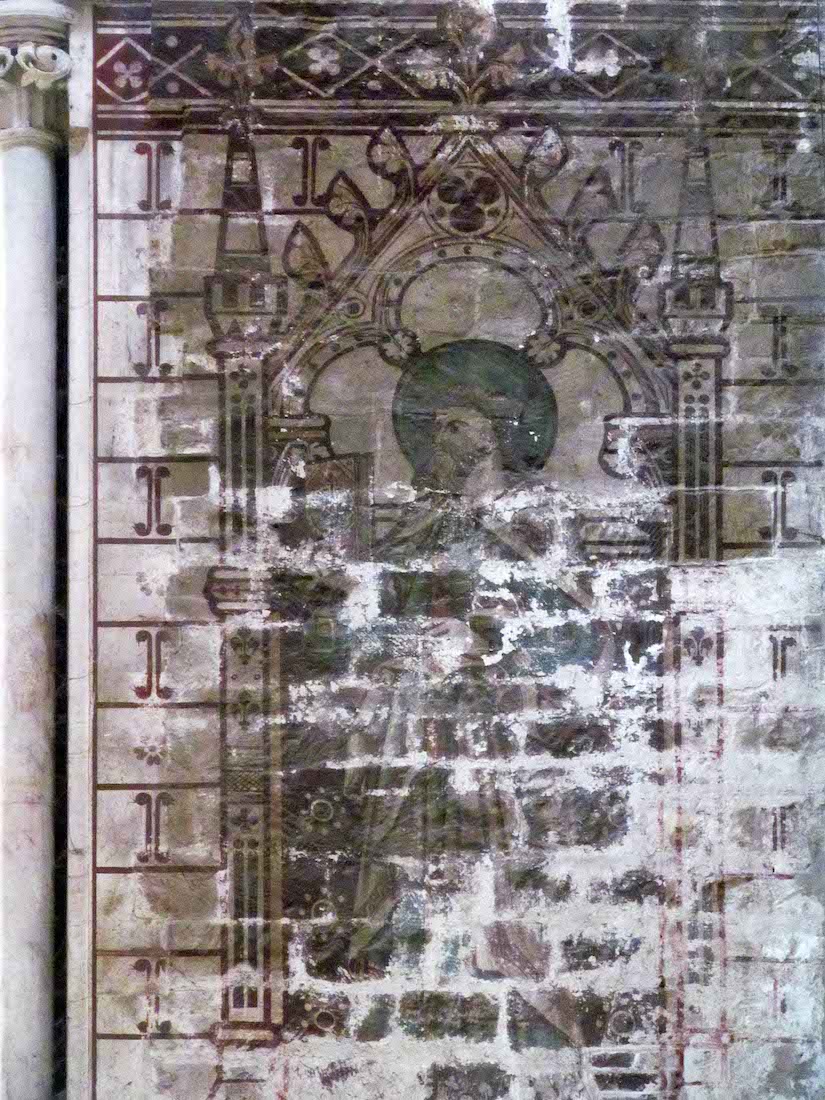
Above the West door is the remains of a Victorian wall painting which was painted directly onto the bare stonework. The paint is beginning to peel off and it is in poor condition in places. It is painted in shades of brown and grey and has the inscription, ‘The Lord reigneth. He is clothed in majesty’. In the centre is Christ in Majesty with angels on either side. Below are St Peter and St Paul.
23. WEST WINDOW J&J
The Abbey West windows show scenes depicting The Childhood of Christ. They are by Clayton & Bell, and in memory of Rev. Dr. Williamson, Vicar, who died in 1867. Detailed views of this window can be found here.
24. BAPTISMAL FONT GA AMT
Close to the entry is the original Abbey font. It was lost for many years after the Reformation in 1540. In the 1920s the font was found in a field at Wick – a village three miles east – being used as a cattle trough. It was then restored and returned to the Abbey where it is still used for baptisms. As baptism is regarded as an initiation rite of entry into the Christian Church (as well as the Christian life), the font is often, as here, placed close to the Church entrance.
25. NORTH TRANSEPT AND HATCHMENT AMT WH
In this high view of the crossing and beyond, we see the baptismal font at bottom left. Beyond is what remains of the North transept. On the far wall is a hatchment bearing the word ‘Resurgam’. This is an eighteenth century funerary hatchment. In Latin, ‘resurgam’ means ‘I shall rise again’ – a word which appears not infrequently on such hatchments.
26. HASELWOOD CHILDREN AMT MS
This is the first of two ornate 17th-century tombs of members of the Haselwood family. This tomb along the West wall of the North transept remembers the many children of the family. Some more details can be seen here.
27. DOORWAY TO NORTH AISLE GA PA
In the Eastern wall of the North transept there is a narrow door opening through to the Chancel. Above the door is a finely carved wooden beam.
29. BELL RINGERS’ PLATFORM PA
We climb up the narrow spiral staircase to reach a narrow corridor along the transept roof line. This brings us to the tower, and the bell-ringers’ platform, known as ‘the cage’. Hanging ropes, floor mats, and a very high fence to prevent accidents! The bell ringers of Pershore must seriously need to conquer any fear of heights!
30. THE BELLS PA
A narrow corridor leads us to the corner of the tower, and another ascending flight of spiral stairs. This brings us to the actual bell chamber. In 1552 it was recorded ‘In the steple five bells, which of late time was bought of the King’s majestie ….’ Today there are eight bells. Six of the bells were cast in 1729 by Abraham Rudhall of Gloucester; the treble (the lightest bell) was cast in 1814 by Thomas Mears of London, and the fourth in 1897 by Barwell of Birmingham. During the archaeological investigations of 1996, a bell-founding pit was discovered close to the Haselwood monument in the South transept. The bells are hung in a wooden bell-frame which some experts consider to date to the 17th century which implies there were eight bells before the 1729 casting, although there is some doubt about this. The inscriptions on the bells read: • 1. ‘JOSEPH MARTIN JAMES EVANS CHURCH WARDENS 1814’; • 2. ‘PEACE AND GOOD NEIGHBOURHOOD A R 1729’; • 3. ‘ABR RUDHALL OF GLOUCESTER CAST US ALL 1729’; • 4. ‘BARWELL FOUNDER BIRMINGHAM. PROSPERITY TO THE CHURCH OF ENGLAND 1729 RECAST FEBRUARY 1897’; • 5. ‘PROSPERITY TO ALL OUR BENEFACTORS A R 1729’; • 6. ‘WALTER MARRIOTT AND EDWARD GALE CHURCHWARDENS A R 1729’; • 7. ‘RICHD ROBERTS ESQR JOHN YEEND & THOS ASHFIELD GENTN TRUSTEES A R 1729’; • 8. ‘I TO THE CHURCH THE LIVING’.
31. VIEW OUT OVER ST ANDREW’S PA
A further flight of spiral stairs brings us to the top of the tower with views all round. Of most interest to me was the close view of the nearby St Andrew’s Church.
32. LOOKING DOWN ON THE CROSSING PA
Descending the steps in the tower, at a lower level we gain some high views of the interior of the Abbey. One such view which we have already seen is the North transept. Another, looking straight down is this view of the crossing. We can see the font standing near the West door, and on the left side there stands a smart little organ with decorated pipes.
33. RETURN TO THE SOUTH TRANSEPT MS
Back at floor level we return to the crossing, looking out across the South transept. At the top of the far wall we see some old Norman columns, and to the right, another hatchment. Immediately before us is a war memorial, with two tombs behind. On the East wall at left there are flags and further war memorabilia, and to the right is the second of the Haselwood tombs. Much to investigate!
34. NORMAN COLUMNS AND HATCHMENT AMT WH
The Norman pillars high up on the transept walls have some attractive decoration, but you need to get close to appreciate it. The hatchment near the transept corner bears the words ‘In coelo quies’ or, ‘In heaven there is rest’.
35. WAR MEMORIAL AND DECORATED KNEELER WH WH
The war memorial stands at the centre of the South transept. It has a cast bronz figure of immortality by Alfred Drury, and remembers those who died in the two World Wars. The names of local people killed in action are listed on the sides. The seats behind have some attractive cushions and kneelers.
36. CROSS-LEGGED KNIGHT WH AMT
There are two tombs behind the war memorial. On one is a 13th century knight’s effigy. The figure is not in situ and is believed to have been outside for some years, suggesting it may have originally stood in the long ago demolished nave. He would be cross-legged, if he still had his legs! It is suggested that he might have been Sir William de Harley.
37. ABBOT’S TOMB AMT WH
The effigy is of an abbot, possibly William de Harvington or Abbot Hert. The effigy is on a tomb chest incorporating quatrefoils. The Abbot‘s tomb used to be in the St John Chapel when the chapel was used as a schoolroom. You can still see graffiti scratched into the tomb by bored 17th and 18th Century schoolchildren!
38. WAR MEMORIALS AND SPANISH ICON AMT GA
Along the East wall of the transept are further reminders of the World Wars, including two flags of the British Legion. Also of interest is the little Spanish wood and plaster figure of Christ the Boy child. Unfortunately this item has since been stolen.
39. ANOTHER HATCHMENT WH
There is a third hatchment to be seen here. This one carries the cheerful text, ‘Mors. est omnibus communts.’ or ‘Death comes for us all’.
40. HASELWOOD TOMB WH
On the West wall of the transept is the impressive late 16th century Haselwood tomb. It is a monument for Thomas Haselwood (died 1624), his son Francis and wife Elizabeth. The Haselwoods were landowners who lived nearby in Wick in the 1500s and 1600s. Some more detailed views are given here.


